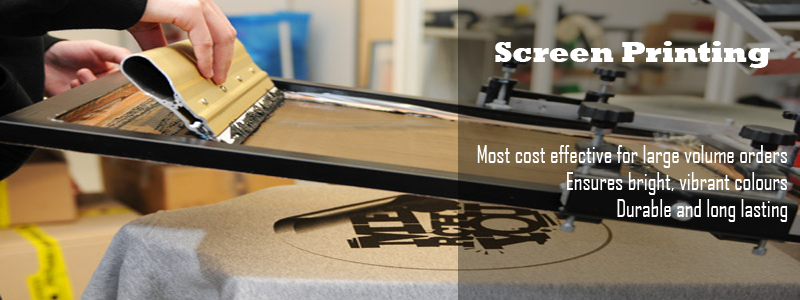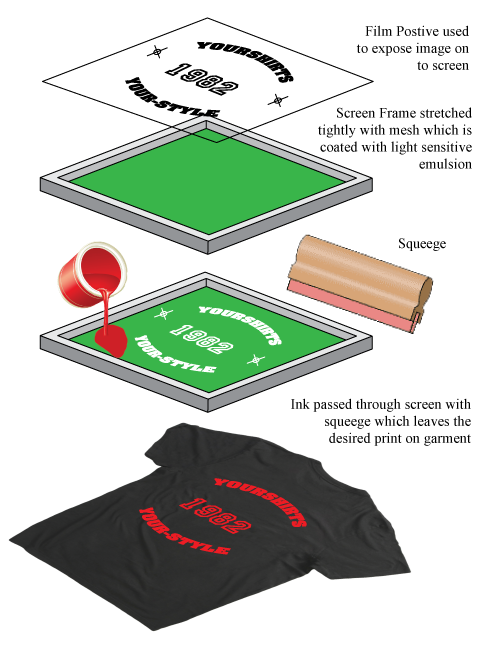
Screen Printing
How it’s done

Screen printing is a technique that uses a woven mesh stretched over a frame with a stencil application through which ink is passed. The stencil forms open areas of mesh that transfer ink onto a substrate as a sharp edged or half-tone image. This is achieved by a squeegee moving across the screen stencil forcing ink through the mesh and onto the garment.
Several screens can be used to produce a multicoloured image, repeating the method using a different screen for each colour. (Each colour in the image will incur an individual set-up charge).
On dark items a white base colour is applied, flash cured and the desired colours are printed on top, ensuring bright colours, even on black material. Once the garment is printed the ink is cured by being sent through a heated tunnel dryer, which ensures durability.
Screen printing is more economically viable for large-volume orders because once the initial setup is ready (creating colour separation screens of the design required), the printing process can be carried out rapidly.
Pros
- Most cost effective for large volume orders
- Better suited for bolder designs with fewer colours
- Ensures bright, vibrant colours
- Durable and long-lasting
Cons
- Not appropriate for small orders because of set-up charges
|
What files types need to be supplied when Screen printing?
- Good quality, high-resolution. JPG, PSD or. PNG files – if you’ve created your artwork in Adobe Photoshop, please save your file at least 100% of your required print size and go with a transparent background.
- Please provide artwork at a minimum of 300 dpi.
- Other file types we accept for screen printing are Adobe Illustrator vector-based files – .EPS, .AI or. PDF.
- When providing vector-based artwork please be sure all your fonts and strokes are outlined.
- Fonts: We require that all text in your artwork should be outlined or embedded. It is recommended that the font size of typography in your artwork is at least 7pt to ensure it is legible. Please avoid super thin font weights where possible.
|
To find out more about our screen printing services:- Contact Us or call us on 01473 414022
Are there any garments that take to screen printing better than others?
For the best results print onto items with a tighter weave, Screen printing will print better onto t-shirts rather than polo shirts for example. A garment with a fabric composition of 100% cotton or a poly-cotton blend will produce excellent print results. Other fabric types such as nylon or polyester shouldn’t be screen printed, transfer printing would be advised here.
